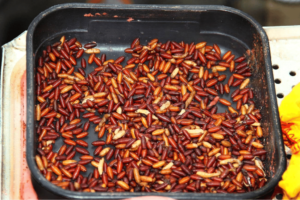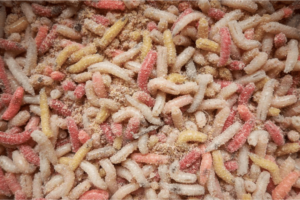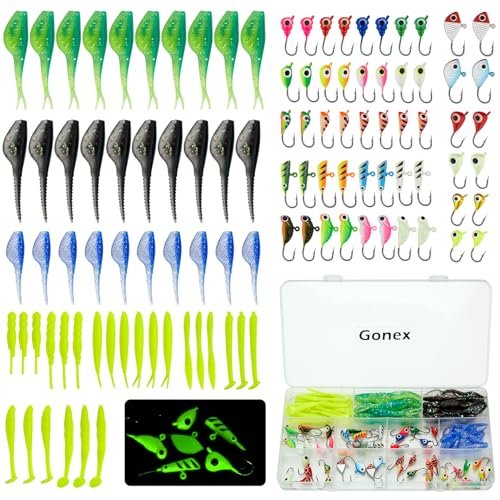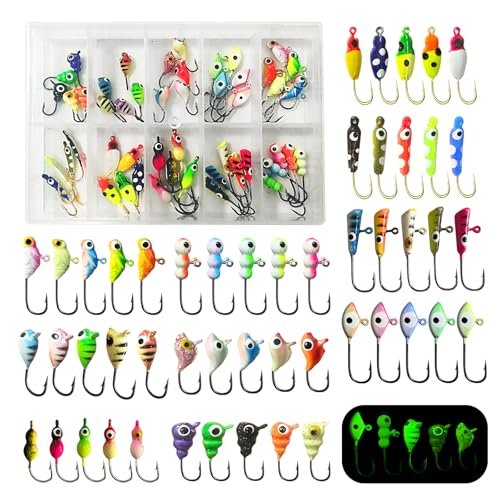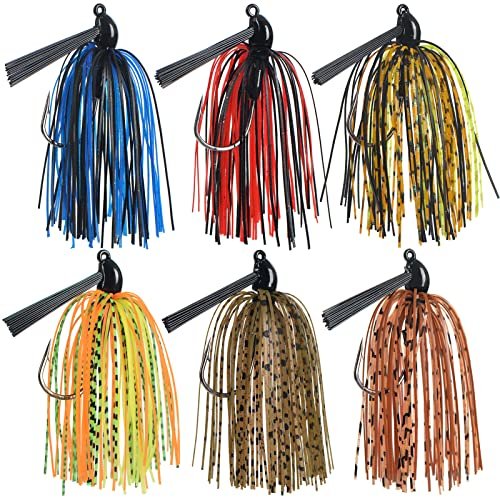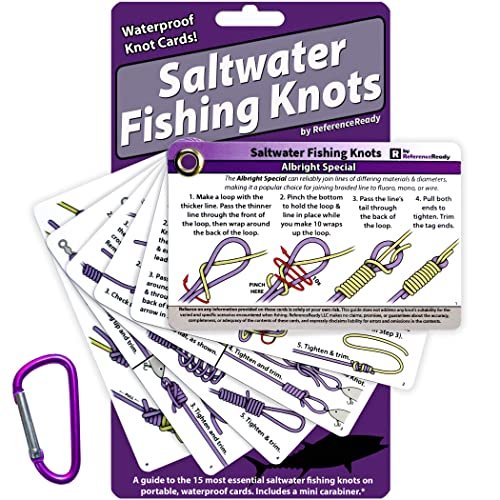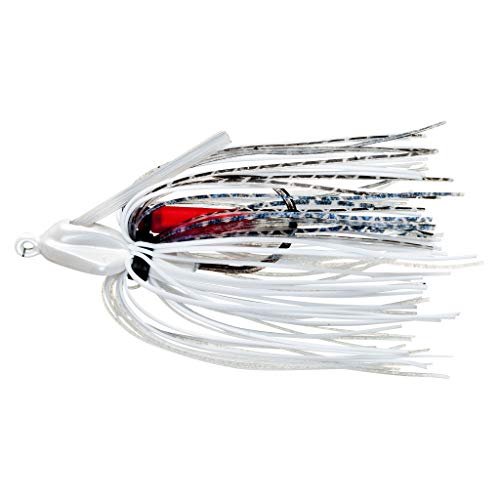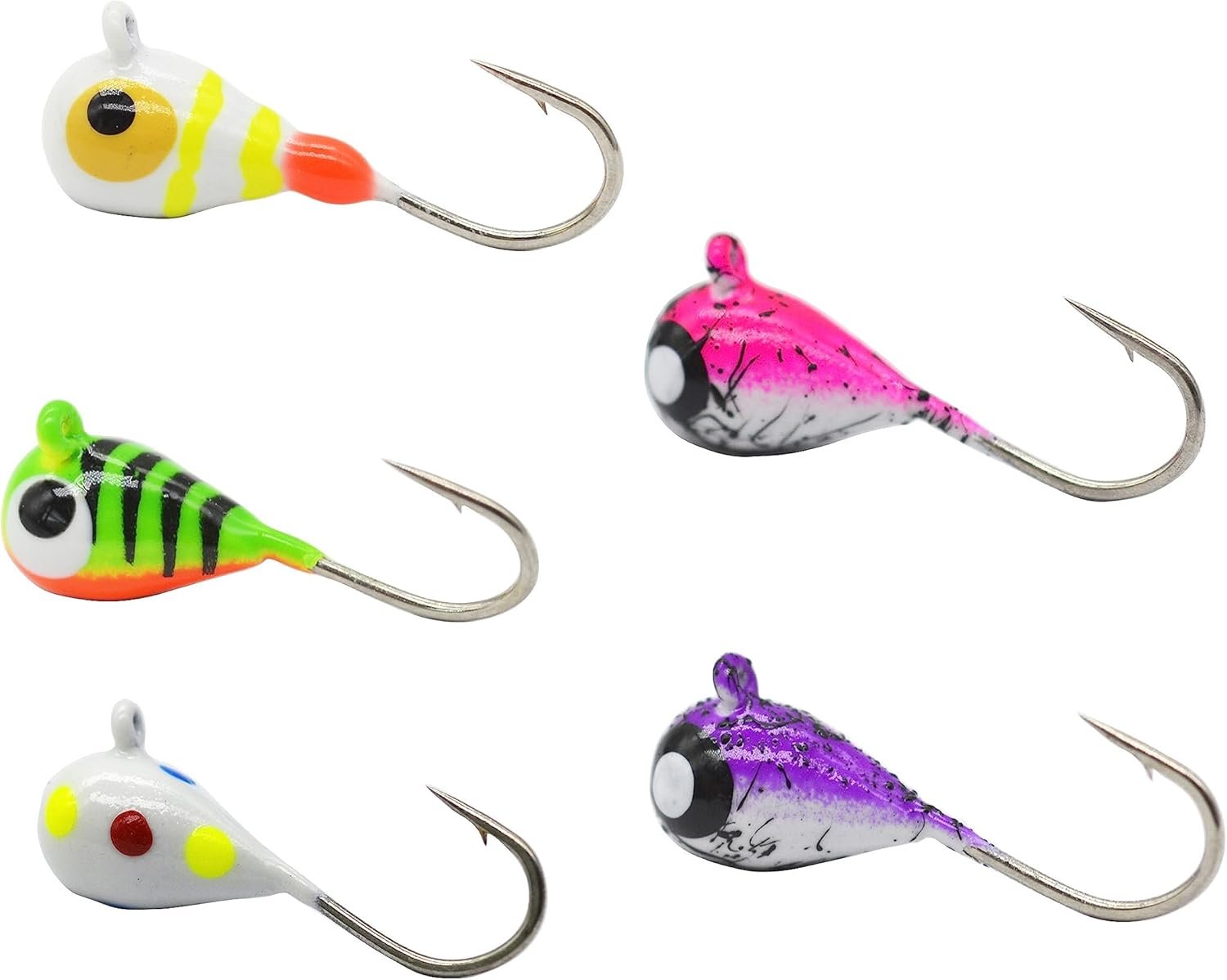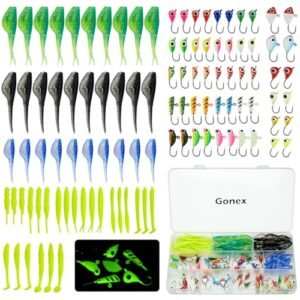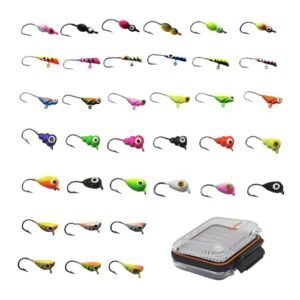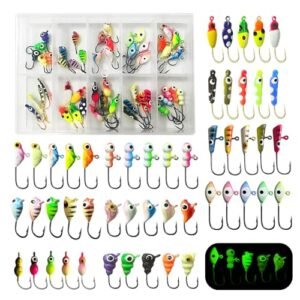Choosing the right fishing bait can significantly enhance your angling experience and success rate. Live fishing baits, such as worms, minnows, and insects, are often the most effective at mimicking natural fish prey, making them irresistible to many species. Artificial fishing baits or lures, designed to replicate the look and movement of prey, offer versatility and can be used repeatedly.
Dead fishing baits, like cut-up pieces of fish, are particularly useful for larger predatory fish that are attracted by scent. For anglers, understanding local fish preferences and habitat is crucial when selecting the appropriate fishing bait. Ensuring your fishing bait is fresh and properly presented will help improve your chances of a good catch. Whether you’re a seasoned fisher or new to the sport, selecting the proper fishing bait is a fundamental skill that can make all the difference in your fishing endeavors.
Fishing Bait Essentials
Every angler knows that the right fishing bait can make or break a fishing trip. Fishing Bait Essentials are crucial for reeling in that big catch. Whether you’re a seasoned fisher or just starting, understanding the basics of bait is key to success.
Why Fishing Bait Choice Matters
Selecting the perfect fishing bait is an art. It’s the difference between going home empty-handed or with a full cooler. Fish are picky eaters, and each species has its preferences. The right bait can mimic their natural food, triggering a bite.
- Match the hatch: Use fishing bait that resembles local fish food.
- Consider water conditions: Murky water might require brighter or scented bait.
- Think like a fish: Choose bait that moves like the prey fish are used to.
Natural Vs. Artificial Baits
The debate between using natural and artificial baits is ongoing among anglers. Both have their place in your tackle box.
| Natural Bait | Artificial Bait |
|---|---|
| Worms, minnows, insects | Plastic worms, spinnerbaits, jigs |
| Great for live bait fishing | Reusable and cost-effective |
| Often more appealing to fish | Wide variety to mimic many prey types |
While natural baits are excellent for their authentic smells and textures, artificial baits offer versatility and longevity. It’s wise to experiment with both to see what works best in different fishing scenarios.

The Science Behind Bait Attraction
Understanding what makes fish bite is key to a successful catch. Fish use their senses to find food. The right fishing bait can make all the difference. Let’s dive into the science that helps your bait stand out.
Scent And Taste Factors
Fish have a keen sense of smell and taste. They can detect chemicals in the water from a long distance. Bait that mimics the natural diet of fish works best. It’s all about finding the right scent and flavor to tempt them.
- Anise oil – Often used in baits because fish love the smell.
- Salt – Makes baits taste more like real food to fish.
- Garlic – A strong scent that can attract fish from afar.
Visual Lure: Color And Motion
Fish rely on sight to strike. The color and motion of your fishing bait can trigger a fish’s predatory instincts. Bright colors work well in clear water. In murky waters, choose baits that create vibration and movement.
| Water Clarity | Color Suggestion | Motion Tip |
|---|---|---|
| Clear | Bright colors like red or orange | Subtle movements |
| Murky | Dark colors like blue or black | Erratic movements |
Remember, a fish’s environment affects how it perceives bait. Choose wisely to increase your chances of a catch.
Natural Baits: Pros And Cons
Anglers know that using natural fishing baits can mean the difference between a good catch and a great one. Natural fishing baits often outperform synthetic alternatives. They offer scents and textures that fish find irresistible. Yet, they can also pose challenges. Let’s dive into the benefits and drawbacks of using them.
Types Of Live Baits
Fish love a meal that’s fresh and lively. Different species prefer different snacks. Here are some popular live baits:
- Worms: Universally loved by fish.
- Minnows: Great for predatory fish.
- Insects: Top choice for surface feeders.
- Crickets: Attract a variety of fish.
- Leeches: Especially effective for freshwater species.
Handling And Storage Tips
To keep your live bait in top condition, follow these tips:
- Store in a cool, shaded place.
- Use an insulated bait container.
- Change water frequently to maintain oxygen levels.
- Handle gently to avoid damage.
| Bait Type | Storage | Temperature |
|---|---|---|
| Worms | Moist soil | Cool |
| Minnows | Aerated container | Cold |
| Insects | Small box | Room temp |
Remember, natural baits can decompose. Keep them fresh for the best results. With proper care, natural baits can give you an edge on the water!
Artificial Baits: Innovation In Angling
Artificial Baits: Innovation in Angling has revolutionized the fishing world. These clever creations mimic live bait, attracting fish with their realistic movements and vibrant colors. Anglers now have a plethora of options to choose from, each designed to target specific fish species effectively.
Popular Synthetic Options
Anglers love these artificial baits for their effectiveness:
- Plastic Worms: Perfect for bass fishing, they wiggle enticingly in water.
- Spinnerbaits: These have metallic blades that spin like propellers, creating vibrations to attract fish.
- Artificial Flies: Used in fly fishing, they float on water and look like insects.
- Jigs: Ideal for deeper water, they mimic small fish or creatures when jerked through the water.
Maintenance And Durability
Artificial baits are known for their long-lasting qualities. Follow these simple steps to ensure they last:
- Rinse baits with fresh water after use to remove salt and dirt.
- Dry them before storage to prevent mold and odor.
- Store in a cool, dry place away from direct sunlight to prevent colors from fading.
With proper care, these baits can serve you for multiple fishing trips, making them a cost-effective choice.
Boost Your Catch Rate With The Right Bait
Imagine a fishing trip where you reel in fish after fish. Sound like a dream? It’s possible. The secret is simple: use the right bait. Different fish crave different snacks. Choose wisely and you’ll be the envy of the lake. Let’s dive into how to match your bait to the fish you’re after and adapt your approach with the seasons.
Matching Bait To Fish Species
Know your target and pick the perfect bait. Each species has its favorites. Here’s a quick guide to get you started:
- Bass love worms and small fish.
- Trout go crazy for insects and larvae.
- Catfish are all about stink baits and chicken liver.
- Panfish can’t resist jigs and minnows.
Use a local fishing guide or ask at your bait shop to fine-tune your choices.
Seasonal Bait Strategies
Fish appetites change with the seasons. Stay ahead with these tips:
| Season | Bait Tips |
|---|---|
| Spring | Use live bait. Fish are hungry after winter. |
| Summer | Go for bright lures. Fish are active and eager. |
| Fall | Try crankbaits. Fish feed heavily before winter. |
| Winter | Opt for smaller bait. Fish metabolism slows down. |
Remember, water temperature plays a big role. Adjust your bait to the conditions. Check online forums for the latest updates.
Techniques For Bait Presentation
Mastering the art of bait presentation can make a huge difference in fishing success. Think of it as a performance, where the bait is the star, and the fish are the audience. The goal is to make the bait so alluring that fish can’t resist taking a bite. Let’s dive into the techniques that can help you achieve that perfect presentation.
The Art Of Casting
Casting is more than just throwing your line into the water. It’s about precision and technique. A good cast places your bait exactly where the fish are. This means knowing where fish like to hide and aiming there. Practice makes perfect in getting your bait to land softly, without scaring fish away.
- Overhead Cast: Good for distance, keep it smooth.
- Sidearm Cast: Great for accuracy under trees or docks.
- Underhand Toss: Gentle for shallow waters.
Remember, the smoother the cast, the more natural the bait appears.
Bait Movement Techniques
Bait that acts like real food catches fish. After casting, it’s all about how you move the bait. This can mean the difference between catching nothing and reeling in a big one.
| Technique | Use Case | Tip |
|---|---|---|
| Still Fishing | For cautious fish | Let bait sit and wait. |
| Jigging | To mimic injured prey | Move up and down gently. |
| Trolling | For deeper waters | Drag bait behind a moving boat. |
Each technique has its place. Use still fishing when you want the bait to appear untouched. Jigging works well when you want to imitate the movement of wounded prey. Trolling is ideal for covering large areas in lakes or the sea.
Pay close attention to how your bait moves through the water. Make it swim, hop, or flutter. Keep it lively, and the fish will come.
Customizing Baits For Different Waters
Customizing Baits for Different Waters is key to successful fishing. Each water type and condition requires specific bait adjustments. Understanding these variations can significantly improve your catch rate.
Freshwater Vs. Saltwater Baits
Freshwater and saltwater fishing demand different baits.
- Freshwater baits often include worms, minnows, and insects.
- Saltwater baits might be shrimp, crabs, or cut bait from larger fish.
Choose baits that native predators naturally consume.
Adjusting Baits For Current And Depth
Water current and depth affect bait presentation.
| Condition | Bait Adjustment |
|---|---|
| Strong Current | Use heavier baits to maintain position. |
| Deep Water | Choose baits that sink slowly and visibly. |
Test different weights to find the best option for each scenario.
Bait Conservation And Ethics
Welcome to our section on Bait Conservation and Ethics. Every angler knows that bait is the key to a successful catch. Yet, not everyone stops to consider the impact of their baiting habits on the environment. In this section, we will explore how we can continue to enjoy fishing while also preserving our precious ecosystems for future generations.
Sustainable Baiting Practices
Adopting sustainable baiting practices is crucial for protecting fish populations and their habitats. This begins with choosing the right bait. Here are some tips:
- Use native species to avoid introducing invasive ones.
- Opt for artificial lures when possible as they reduce the need for live bait.
- Avoid over-harvesting bait from a single area.
Remember, the goal is to minimize our footprint on the water’s ecosystem. Responsible baiting ensures a balanced aquatic environment.
Catch And Release Considerations
Catch and release is a practice that supports fish conservation. However, it comes with its own set of ethical considerations. Here are some points to keep in mind:
- Handle fish with care to avoid injury.
- Use barbless hooks for easier release.
- Keep the fish in water as much as possible during release.
By following these guidelines, anglers can help ensure that released fish survive to maintain a healthy population.
Frequently Asked Questions
Which Is The Best Bait For Fishing?
The best bait for fishing depends on the targeted fish species, but live bait like worms or minnows often yields effective results.
What Is The Most Common Fishing Bait?
The most common fishing bait is live worms, often used for their universal appeal to various fish species.
What Is Fishing With Bait Called?
Fishing with bait is commonly referred to as bait fishing or angling. This method involves using live or artificial bait to attract and catch fish.
What Can I Use To Attract Bait To Fish?
To attract bait to fish, use chum, which is a mixture of ground-up fish parts, or opt for scented dough baits, artificial lures, and live baits such as worms or minnows.
Conclusion
Choosing the right fishing bait can significantly increase your catch rate. Experiment with different types to see what works best in your local waters. Remember, the key to successful fishing lies in understanding and adapting to the aquatic environment. So, grab your gear, try these tips, and enjoy a fruitful fishing adventure!



